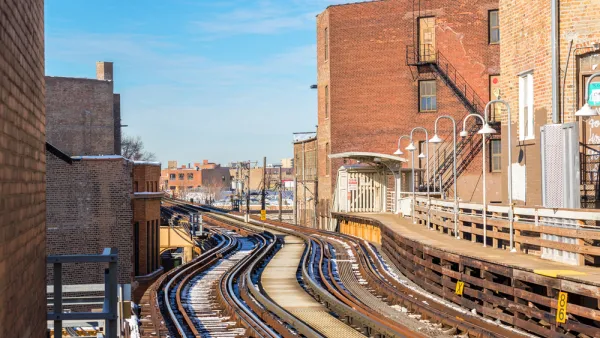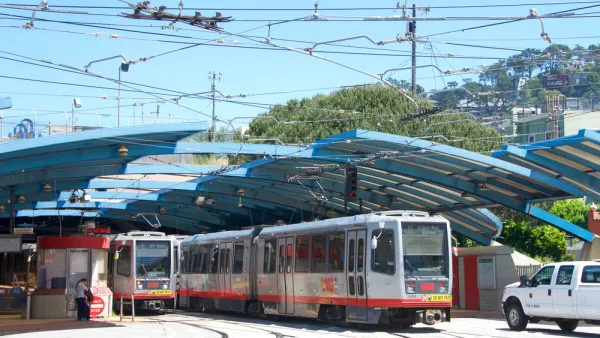As Chicago's population slowly dwindles, Yonah Freemark argues that the city needs to take advantage of one of its greatest assets: its transit network. Housing for residents of all incomes near transit stops may be the key.

Chicago is caught in a paradox: the city's overall population is stagnant. And yet, the city is gentrifying.
By most accounts, Chicago remains an attractive, vibrant city. So much so that wealthier residents are snatching up rental properties, and driving up rents, while displacing some of the city's poorer residents. The result is not only a less egalitarian city, but also one that fails to capitalize on the city's extensive, fully built-out transit network. That's the analysis of Yonah Freemark, a project manager with Chicago's Metropolitan Planning Council.
While Chicago may seem like the ultimate in transit-oriented cities—a large percentage of the city's residences and even larger percentage of its employment centers are within a mile radius of transit—Freemark contends that higher-income residents do not use transit as much as their less wealthy counterparts. They also live at lower densities. Thus, Chicago may be cannibalizing itself.
"[W]hy are Chicago’s vibrant, transit-oriented communities that are attracting people still losing population? People who want to live in these areas but cannot afford high-price homes instead often choose to move to new suburban communities, which results in more traffic congestion and higher transportation costs, not to mention encouraging construction on previously undeveloped land," writes Freemark.
This problem, though, is not just one of economics. It's also one of policy.
"One of the primary reasons why homes and apartments in many of Chicago’s neighborhoods are so expensive, and why population has declined, is that zoning has limited the construction of new housing," writes Freemark. Freemark lauds the city's 2013 transit oriented development ordinance but contends that much more remains to be done until Chicago successfully marries its 20th century infrastructure with 21st century urban trends.
FULL STORY: Why should Chicago focus growth near transit?

National Parks Layoffs Will Cause Communities to Lose Billions
Thousands of essential park workers were laid off this week, just before the busy spring break season.

Retro-silient?: America’s First “Eco-burb,” The Woodlands Turns 50
A master-planned community north of Houston offers lessons on green infrastructure and resilient design, but falls short of its founder’s lofty affordability and walkability goals.

Delivering for America Plan Will Downgrade Mail Service in at Least 49.5 Percent of Zip Codes
Republican and Democrat lawmakers criticize the plan for its disproportionate negative impact on rural communities.

Test News Post 1
This is a summary

Test News Headline 46
Test for the image on the front page.

Balancing Bombs and Butterflies: How the National Guard Protects a Rare Species
The National Guard at Fort Indiantown Gap uses GIS technology and land management strategies to balance military training with conservation efforts, ensuring the survival of the rare eastern regal fritillary butterfly.
Urban Design for Planners 1: Software Tools
This six-course series explores essential urban design concepts using open source software and equips planners with the tools they need to participate fully in the urban design process.
Planning for Universal Design
Learn the tools for implementing Universal Design in planning regulations.
EMC Planning Group, Inc.
Planetizen
Planetizen
Mpact (formerly Rail~Volution)
Great Falls Development Authority, Inc.
HUDs Office of Policy Development and Research
NYU Wagner Graduate School of Public Service





























